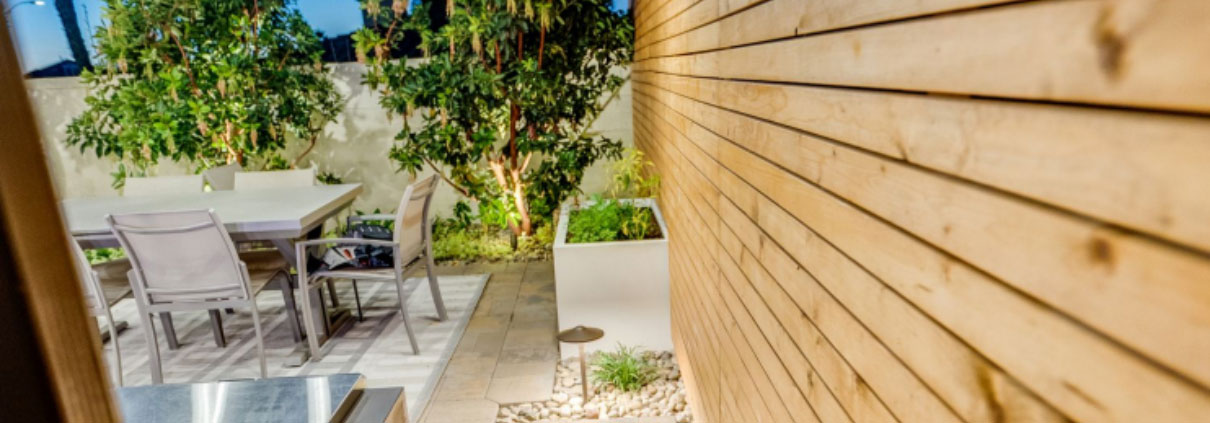
WoodWood is a natural, organic material derived from trees, commonly used in landscaping and constructio... retaining wallsRetaining walls are structures designed to hold back soil and prevent erosion in landscapes with var... are a popular choice for enhancing outdoor spaces, providing both aesthetic appeal and functional benefits like soil erosion controlErosion control involves implementing strategies and techniques to prevent soil erosion, which can l... and the creation of levelA level is a tool used to determine whether a surface is horizontal (level) or vertical (plumb). It ... areas on sloped terrain. However, the longevity and structural integrity of wood retaining walls depend significantly on implementing effective drainage solutions.
In this comprehensive guide, we delve into various wood retaining wall drainageRetaining wall drainage is a crucial process in the construction of retaining walls, designed to pre... techniques, emphasizing the role of a skilled hardscape contractor in achieving lasting results.
Adequate drainage is essential to prevent water accumulation behind the retaining wall, which can lead to increased soil pressure and, ultimately, structural damage. Poor drainage not only compromises the wall's integrity but can also lead to soil erosion and the deterioration of the building material. Therefore, incorporating a comprehensive drainage solution during the wall design phase is crucial.
Creating a level base is the foundational step in constructing a retaining wall that stands the test of time. This involves carefully excavating the site and compactingCompacting is the process of compressing soil, gravel, or other base materials to eliminate air gaps... the ground to form a stable base layer. The level base serves multiple critical functions; it evenly distributes the weight of the wall and the lateral pressure from the soil it retains, which is crucial for preventing uneven settling.
Settling can lead to gaps in the drainage system, rendering it ineffective and compromising the wall’s stability. Moreover, a level base ensures that the drainage features, such as weep holes and perforated pipes, are positioned correctly to facilitate optimal water flow away from the wall.
The type of soil used behind a retaining wall significantly influences the effectiveness of the drainage system. ClayClay is a natural, fine-grained soil material that becomes pliable when wet and hardens when dried o... soils tend to retain moisture, increasing hydrostatic pressure against the wall and potentially leading to structural issues over time. To counteract this, a combination of soil types and a layer of gravel can be used to enhance drainage. The gravel acts as a filter, preventing soil from clogging the drainage system while allowing water to percolate through to the drainage pipe.
Implementing a graded backfill, where the soil closest to the wall is more permeable and gradually becomes less, so moving away from the wall, can also be effective. This setup encourages water to move downwards and away from the wall, reducing pressure.
Consulting with expert hardscape contractors can provide valuable insights into the most suitable soil and gravel types for your specific project, taking into account the local climate, soil composition, and the wall’s height and length.
For taller walls or those built in areas with significant hydrostatic pressure challenges, such as high rainfall zones or near water bodies, additional structural reinforcements are essential. Tie-back anchors, also known as soil nails, extend into the soil behind the wall and are anchored in place, providing tensile strength to counteract soil pressure.
Deadman anchors, another reinforcement method, are buried further back in the soil and connected to the wall, acting as counterbalance weights. These reinforcements work in tandem with the drainage system to alleviate pressure on the wall, enhancing its stability and durability. Incorporating geotextile fabric behind the wall, in conjunction with gravel and proper soil, can also add to the wall’s stability by separating the soil from the drainage layer, preventing silt and sediment from clogging the system while still allowing water to drain through.
Proper drainage is vital in maintaining the structural integrity of wood retaining walls. By preventing water accumulation behind the wall, drainage systems reduce hydrostatic pressure, which can push against the wall and cause it to lean, shift, or even collapse. This reduction in pressure helps ensure the wall remains stable and functional for years to come.
Wood, as a natural and somewhat vulnerable building material, requires protection from the elements to last. Effective drainage protects wood from constant moisture exposure, which can lead to rot, mold, and fungal growth. By keeping the wood dry, drainage systems significantly extend the lifespan of the wall, making it a more durable and cost-effective solution.
Soil erosion behind and around the retaining wall can be a major issue, especially in areas with loose or sandy soil. Proper drainage mitigates the risk of erosion by directing water away from the wall and the soil it supports. This not only preserves the landscape but also prevents the undermining of the wall’s foundation, which could lead to structural issues.
Water damage can mar the appearance of wood retaining walls, leading to staining, discoloration, and the growth of unsightly mold and mildew. Adequate drainage maintains the aesthetic appeal of the wall by preventing these issues, ensuring the wall continues to enhance the beauty of the outdoor space.
Implementing a robust drainage solution from the outset can significantly reduce the need for ongoing maintenance and costly repairs. By addressing potential water-related issues before they arise, property owners can save on the expenses associated with fixing structural damage, treating wood rot, and replacing eroded soil.
Effective drainage systems not only protect the retaining wall but also contribute to the health of the entire landscape. Excess water can lead to oversaturated soil, harming plants and destabilizing other structures. Properly designed drainage ensures that water is efficiently removed, protecting plant life and maintaining the balance of the surrounding ecosystem.
Don't let poor drainage compromise the beauty and integrity of your wood retaining wall. Contact West Hills Masonry to consult with our expert hardscape contractors. We'll ensure your retaining wall is equipped with the most effective drainage techniques for a lasting, beautiful outdoor space.
Schedule your consultation now and take the first step toward a durable and aesthetically pleasing wood retaining wall!
 Carlos Gonzales
Carlos GonzalesLocations We Serve
Schedule A Consultation